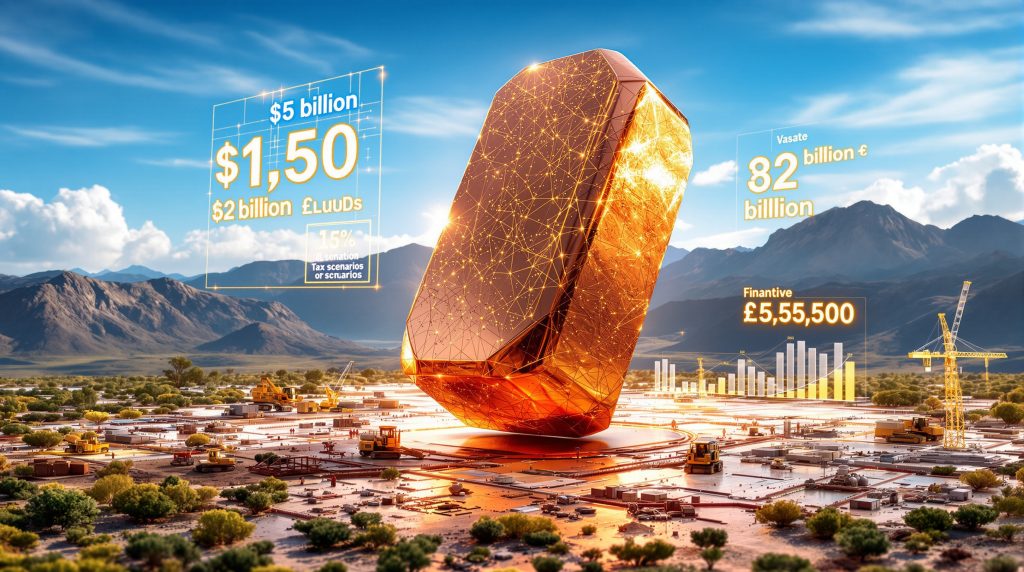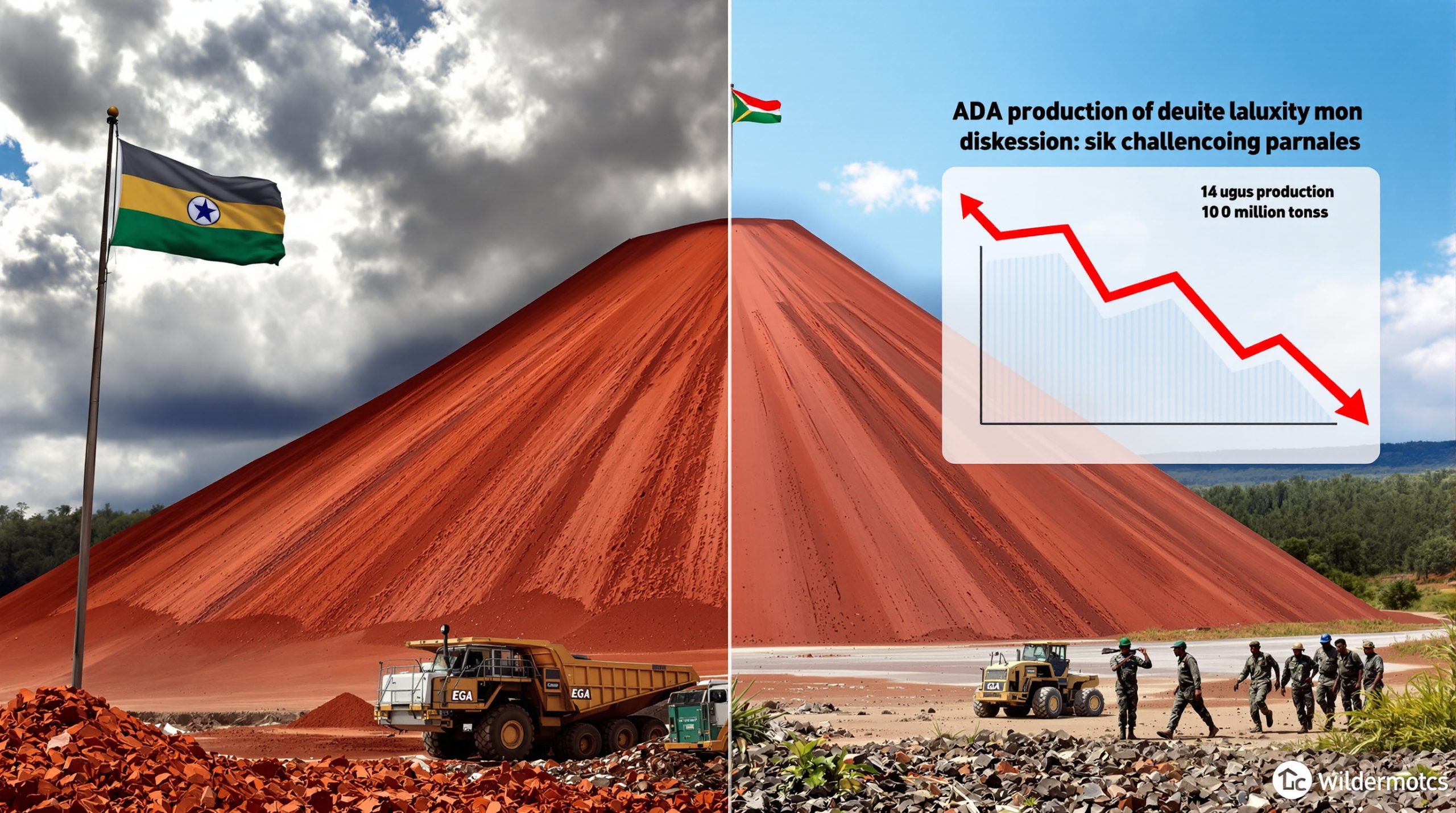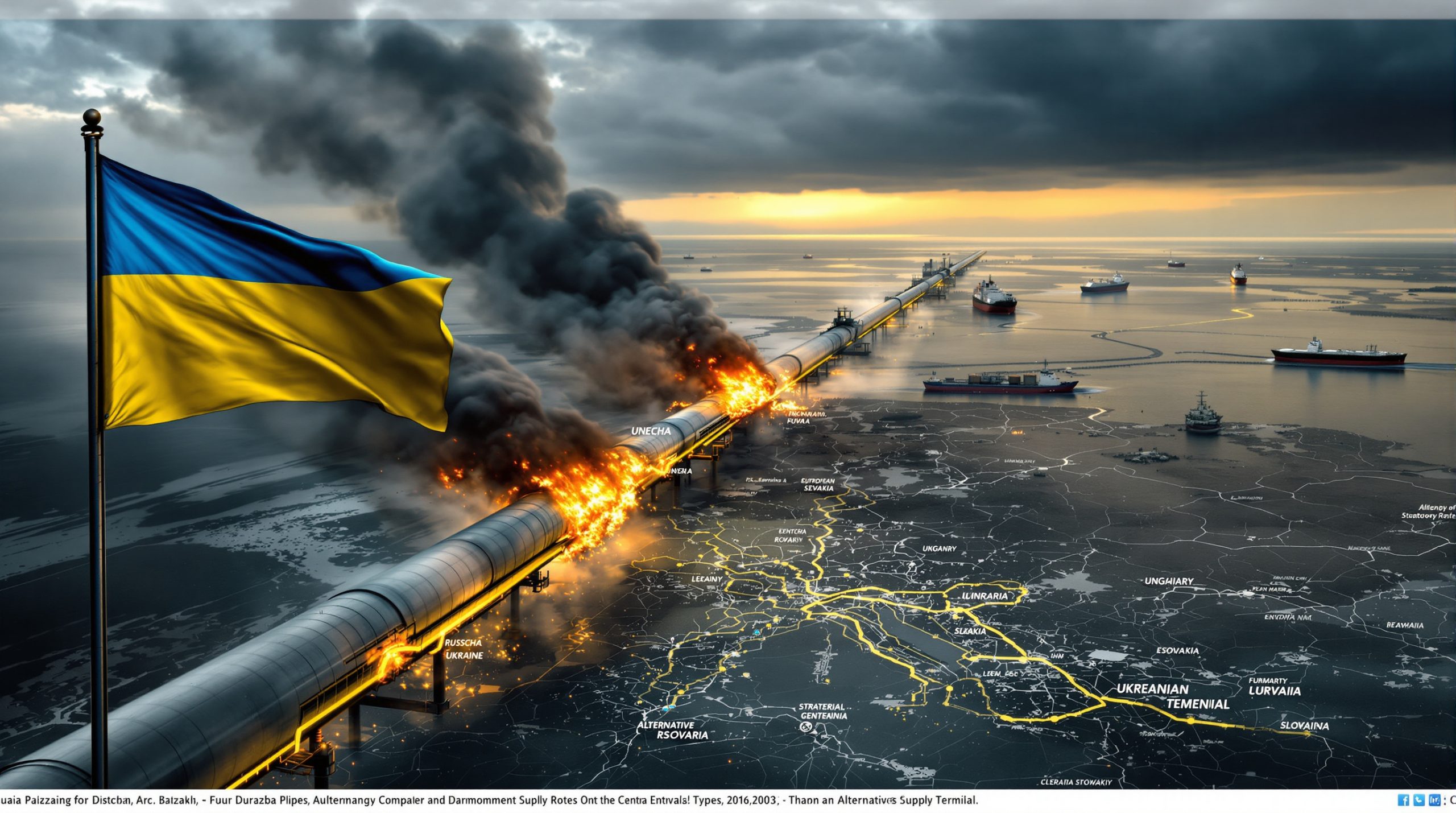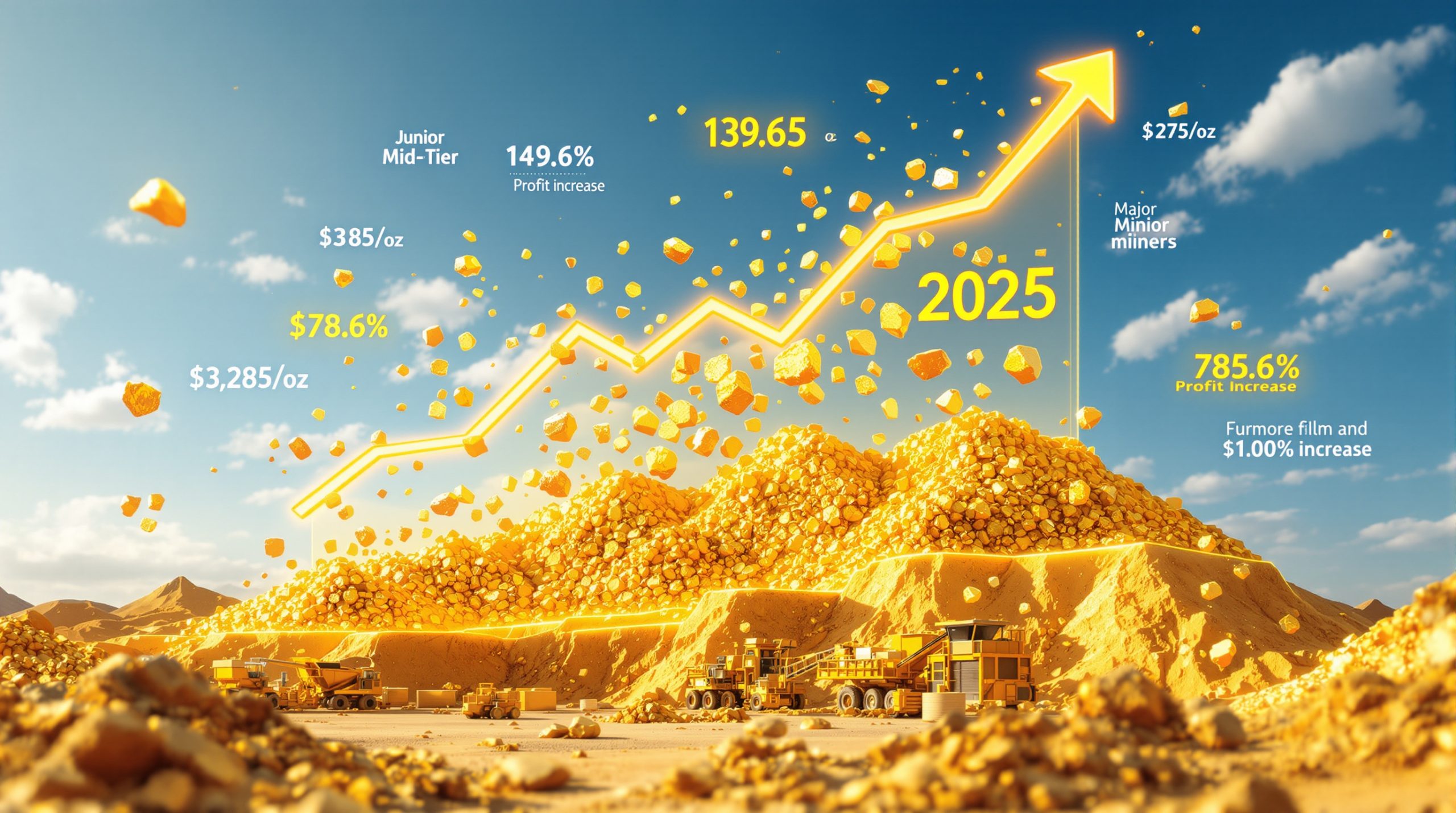Aldebaran's Strategic Plans for Developing the $1.5 Billion Altar Copper Project
The Canadian mining company Aldebaran Resources is positioning itself as a significant player in Argentina's copper industry with ambitious plans to develop the Altar copper project in the country's northern region. According to country manager Javier Robeto, the company is preparing to invest approximately $1.5 billion to bring this substantial mineral resource into production.
This significant capital expenditure will be detailed in the upcoming preliminary economic assessment (PEA), scheduled for release in September 2025. The assessment will provide comprehensive insights into the project's viability, development timeline, and economic potential.
Resource Magnitude and Production Scenarios
The Altar project represents one of Argentina's most substantial copper resources, with preliminary estimates indicating approximately 32 billion pounds of copper and around 6.7 million ounces of gold. These impressive figures position the project as a potentially significant contributor to global copper supply forecast at a time when demand for the metal continues to grow due to electrification and renewable energy transitions.
Robeto has indicated that the upcoming economic assessment will present two distinct production scenarios:
- Copper concentrate production – A traditional approach involving mineral processing to create a concentrated product for export
- Copper cathode production – A more refined approach producing higher-value copper metal through additional processing
"The idea would be to conduct a trade-off analysis, looking at the pros and cons," Robeto explained when discussing the production options under consideration. Each approach presents different capital requirements, operational costs, and market opportunities that must be carefully weighed.
Technical Considerations and Development Approach
The development of such a substantial resource requires careful technical planning. While specific processing methodologies haven't been fully disclosed, the trade-off analysis will likely consider factors such as:
- Water availability and management in the arid northern region
- Power infrastructure requirements
- Environmental impact differences between production methods
- Capital efficiency and operational costs
- Market accessibility for different product types
The project's remote location in northern Argentina also presents logistical challenges that must be addressed in the development plan, including transportation infrastructure for both construction materials and eventual product export.
Argentina's RIGI Program: Critical Tax Incentives with Uncertain Timeline
Investment Incentive Framework
A significant factor in Aldebaran's development plans is Argentina's recently established Régimen de Incentivo a las Grandes Inversiones (RIGI) program. Launched in October 2024 under President Javier Milei's administration, this program offers substantial tax advantages and legal protections for investments exceeding $200 million.
The RIGI program represents Argentina's effort to attract major foreign investment in strategic sectors, including mining. Benefits include:
- Significant reduction in overall tax burden
- Access to international dispute resolution mechanisms
- Enhanced investment security through legal protections
- Fiscal stability provisions to protect against regulatory changes
Timeline Challenges and Application Window
A critical concern for Aldebaran is whether the company can deploy the required investment in time to qualify for RIGI benefits. The program:
- Accepts applications through July 2026
- May have a potential one-year extension
- Has approved only two mining projects to date, both in the lithium sector
This creates uncertainty for the Altar project's economic model. As Robeto candidly acknowledged: "It's not certain we'll make it. It's a challenge because if the RIGI is cut off, what happens next? The tax burden automatically returns to 54%."
Tax Implications and Economic Impact
The difference between qualifying for RIGI and missing the application window could substantially impact the project's financial viability. Argentina's standard tax burden of 54% for mining operations without RIGI benefits represents one of the region's higher taxation rates.
For a project with $1.5 billion in initial capital expenditure and ongoing operational costs, the tax differential could amount to hundreds of millions of dollars over the project's lifespan, potentially affecting:
- Internal rate of return
- Payback period
- Overall project economics
- Investment attractiveness compared to competing global opportunities
This timing challenge highlights the complex interplay between government policy, regulatory frameworks, and mining investment decisions.
Long-Term Outlook for the Altar Copper Project
Project Lifespan and Operational Timeline
Based on current resource estimates and anticipated production rates, the Altar copper project has an estimated operational lifespan of 20 to 25 years. This multi-decade horizon positions the project as a long-term contributor to Argentina's mining sector and economic development.
While specific construction and production timelines have not been publicly disclosed, the upcoming economic assessment will likely provide more detailed insights into:
- Pre-construction engineering and permitting phases
- Construction timeline and capital deployment schedule
- Ramp-up period to full production
- Potential for phased development approaches
Competitive Landscape in Argentine Copper
Aldebaran's project is part of a broader development of copper resources in Argentina, where other companies are also pursuing RIGI program benefits. Notable competitors include:
- Glencore – Operating with established mining presence in the region
- McEwen Mining – Also advancing copper projects and seeking RIGI qualification
This competitive landscape could influence everything from contractor availability to infrastructure development prioritization, potentially affecting Aldebaran's development timeline and costs.
Global Copper Market Context
The Altar project's development coincides with growing global demand for copper driven by:
- Renewable energy infrastructure requiring substantial copper inputs
- Electric vehicle production increasing copper intensity per vehicle
- Electrification trends across multiple industries
- Global decarbonization initiatives requiring copper-intensive technologies
Industry analysts generally anticipate potential copper supply constraints in the coming decades, potentially creating favorable copper price predictions for new producers like Aldebaran's Altar project as it reaches production.
Strategic Importance of Copper Development in Argentina
Economic Development Potential
The $1.5 billion investment represents a significant economic boost for northern Argentina, a region that could benefit substantially from mining development. Potential economic impacts include:
- Direct employment during construction and operations
- Indirect employment through supply chains and services
- Tax revenue generation at local, provincial, and national levels
- Infrastructure development with potential community benefits
- Skills development and technology transfer
National Resource Strategy
For Argentina, developing copper resources represents an opportunity to diversify its mining sector beyond its current focus on lithium. This diversification can help:
- Balance commodity exposure across different market cycles
- Establish Argentina as a multi-mineral mining jurisdiction
- Attract additional investment in related sectors
- Build technical and regulatory capacity in copper mining
Energy Transition and Global Context
Copper's critical role in electrification and renewable energy technologies makes large-scale projects like Altar strategically valuable in the global transition to lower-carbon energy systems. Copper is essential for:
- Solar power systems requiring approximately 5 tons of copper per megawatt
- Wind power installations using 2.5-6 tons of copper per megawatt
- Electric vehicle production requiring 3-4 times more copper than conventional vehicles
- Energy storage systems and grid infrastructure
This strategic importance likely contributes to government support for copper development through programs like RIGI.
Investment Considerations for Copper Mining in Argentina
Risk and Opportunity Assessment
Investors considering exposure to Aldebaran's Altar project or similar copper developments in Argentina must weigh several factors:
- Regulatory uncertainty – While RIGI offers improved stability, future policy changes remain possible
- Currency considerations – Argentina's history of currency volatility affects operational economics
- Infrastructure limitations – Remote project locations present logistical challenges
- Community engagement – Social license to operate remains critical for project success
- Water management – Operating in water-constrained environments requires careful planning
Production Cost Positioning
Argentina's copper projects must compete globally on production costs. Factors influencing cost position include:
- Labor cost advantages compared to some jurisdictions
- Potential infrastructure challenges increasing transportation costs
- Energy availability and cost considerations
- Taxation levels, particularly RIGI qualification impacts
- Technical factors including ore grade and processing requirements
According to a comprehensive report by RFC Ambrian, global copper project development faces significant challenges around capital intensity and permitting timelines, making Argentina's RIGI program potentially more attractive for developers.
Timeline Expectations and Development Patience
Given the current project status and typical development timelines for major copper projects, investors should recognize that:
- The preliminary economic assessment in September 2025 represents an early development stage
- Subsequent feasibility studies will further refine project economics
- Permitting processes can extend timelines significantly
- Construction of a project this size typically requires 2-3 years minimum
- Full production ramp-up adds additional time before peak financial returns
Key Factors for Altar Project's Success
Technical Excellence Requirements
The successful development of the Altar copper project will require technical excellence across several domains:
- Resource modeling – Ensuring accurate understanding of the deposit's characteristics
- Metallurgical optimization – Developing efficient processing approaches for the specific ore body
- Water management – Designing sustainable water systems in a water-constrained region
- Environmental engineering – Minimizing ecological footprint and ensuring regulatory compliance
- Project execution – Managing complex construction in a challenging environment
Stakeholder Engagement
Effective stakeholder management will be critical, particularly regarding:
- Community relations – Building and maintaining social license to operate
- Government coordination – Navigating multiple regulatory jurisdictions
- Investor communications – Managing expectations through a lengthy development process
- Partner alignment – Ensuring all project participants share common objectives
The project will need to navigate the complex regulatory landscape while addressing industry consolidation trends that may impact partnership opportunities.
Financial Discipline
With $1.5 billion in capital at stake, financial discipline will be paramount:
- Capital efficiency – Maximizing return on every dollar invested
- Cost control – Preventing project overruns common in large mining developments
- Optimal financing structure – Balancing debt, equity, and potential strategic partnerships
- Phasing opportunities – Considering staged development to manage capital requirements
Investors looking at projects of this scale should consider diversified copper investment strategies rather than concentrating risk in a single development.
Frequently Asked Questions About the Altar Copper Project
What exactly does the $1.5 billion capital expenditure cover?
While detailed breakdowns haven't been published, typical copper projects of this scale allocate capital to:
- Mine development and equipment
- Processing plant construction
- Tailings storage facilities
- Supporting infrastructure (power, water, roads)
- Owner's costs and contingencies
How does Altar's resource compare to other global copper projects?
With 32 billion pounds of copper resources, Altar ranks among the larger undeveloped copper projects globally, though resource size alone doesn't determine economic viability. Factors such as grade, metallurgy, and development costs significantly impact project economics.
What benefits does the RIGI program offer mining companies?
The RIGI program provides qualifying mining investments (exceeding $200 million) with substantial tax advantages, reducing the standard 54% tax burden. Additionally, it offers access to international dispute resolution mechanisms, improving investor protections compared to standard Argentine jurisdiction.
Recent developments in the Argentine mining sector have led to increased interest in gold‐copper exploration insights from projects like Altar that contain both metals.
What production methods is Aldebaran considering?
Aldebaran is evaluating two production scenarios: producing copper concentrate or copper cathodes. The upcoming economic assessment will include a trade-off analysis of both options, considering capital requirements, operational costs, market factors, and logistical considerations.
What happens if Aldebaran misses the RIGI qualification window?
If Aldebaran cannot deploy sufficient investment before the RIGI application deadline (July 2026, with potential extension), the project would face Argentina's standard 54% tax burden, significantly impacting project economics and potentially requiring redesign or reconsideration of development plans.
How does copper mining contribute to renewable energy development?
Copper is essential for renewable energy infrastructure, with solar installations requiring approximately 5 tons per megawatt and wind installations using 2.5-6 tons per megawatt. Electric vehicles use 3-4 times more copper than conventional vehicles, making copper critical for energy transition technologies.
According to Sibanye-Stillwater's industry analysis, global copper demand is expected to grow significantly through 2030, driven primarily by renewable energy infrastructure and electric vehicle production.
Disclaimer: This article contains forward-looking statements and economic projections based on currently available information. Future outcomes may differ from these projections due to changes in market conditions, regulatory environments, technical developments, or other factors. Readers should consider these projections as speculative and conduct their own due diligence before making investment decisions.
Ready to Stay Ahead of the Next Major Mineral Discovery?
Discover how significant mineral finds like the Altar copper project can generate substantial returns by exploring Discovery Alert's dedicated discoveries page, where our proprietary Discovery IQ model delivers real-time alerts on ASX mineral discoveries, instantly empowering subscribers with actionable opportunities. Begin your 30-day free trial today at https://discoveryalert.com.au/discoveries/.




